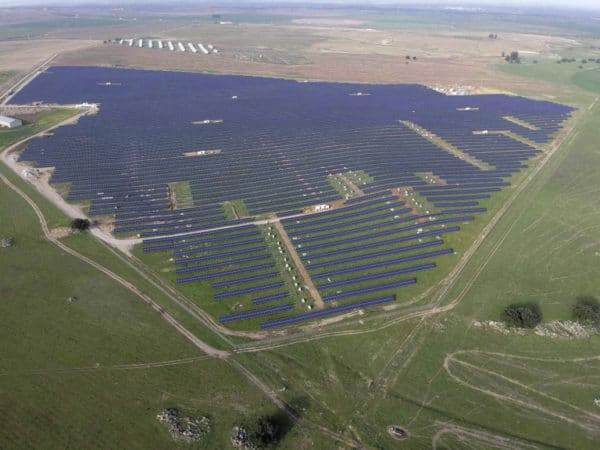From pv magazine 12/2020
Auctions get sophisticated
Solar PV auctions in 2020 continued to deliver incredibly low prices across several continents. But beyond the headline numbers lie an increasing complexity. In fact, while the winners of the 2020 Nobel Prize in economics, Stanford professors Paul R. Milgrom and Robert B. Wilson, have promised to apply their auction theories to future procurement schemes for renewable energy, they may not be needed, given what has been achieved in 2020.
A ranking of final auction prices achieved this year is difficult to compile, given their complexity and the fact that the mechanisms behind each auction are becoming increasingly sophisticated. Different bidding options in each auction determine revenue streams for investors, and the prices offered.
Portugal’s auction

Image: Hyperion Renewables
For example, the world’s lowest solar bid in a contract for difference with a national government to date – approximately €11.14/MWh – was submitted in Portugal’s second solar auction, which was held in August. This auction, however, was also open to other bidding options, including the possibility to offer grid services to the electricity system for the installation of PV plants and co-located storage.
The mechanism for the provision of grid services ran counter to the Portuguese government’s subsidies that characterized the early phase of renewables deployment. In fact, this time it is the solar developer that commits to pay a fee to the government for the electricity injected in the grid from a solar project. And when considering what each project has committed to pay in “reverse subsidy ” during 15 years in the auction results, it is remarkable to see that the accumulated amount of each winning project will be greater than the initial project capex cost.
“Portugal has limited grid capacity left for new power plants and the auction winners have secured part of this capacity over the next decades on an eternal basis, with the possibility also to later hybridize and use the awarded capacity for connection of other generating technologies,” Michele Lauritano, senior consultant of the Madrid office of renewables consultancy Everoze, told pv magazine.
On top of this strategic gain, the winning projects have committed, in line with auction rules, to build storage systems accounting for at least 20% of the tendered capacity and to further compensate the power network for peaking power prices in the electricity spot market over a period of 15 years.
“Developers appear to have decided to bet on low frequency of events when the power prices on the spot electricity market will be peaking at very high values, in the hope that the storage system operation could counteract these events and generate revenue though arbitrage, which can protect the investment from the penalties that the projects will have to pay during these events, as expected by auctions rules,” Lauritano explained. “In addition, the storage system will enable the project to provide flexibility and other grid regulation services which can create additional sources of revenue for the project.”
Considering all the variables, it is not easy to say which player will benefit most from the different options of the Portuguese auction. Instead it is clear that the big winner is Portugal’s government, which has found a way to maximize the value of scarce grid capacity through a competitive mechanism that various other countries are now looking to emulate.
Abu Dhabi weighting
The world’s second-lowest solar bid was submitted for a PV auction held by Emirates Water and Electricity Co. (EWEC), in which JinkoPower and French energy giant EDF offered a price of US$0.0135/kWh for a 1.2 GW project that secured a 30-year power purchase agreement. In this auction, the offers were ranked based on energy-weighted levelized electricity cost, which accounts for both the cost of electricity and the amount of energy produced.
“From an offtaker perspective, it allows incorporating costs of infrastructure enhancement and the potential savings from shifting away from other expensive means of power generation, such as natural gas,” JinkoPower told pv magazine in July. The auction includes an optional storage facility of a maximum of 225 MW and 300 MWh, but the PPA has so far been signed only for the PV plant.
Popular content
Governments in countries with high solar radiation and good conditions for PV project development have now secured a method to buy very cheap power at prices that range between $0.01 and $0.02/kWh. And if the Covid-19 crisis will give us a break, there is no doubt that a new wave of the world’s lowest solar bids will come next year.
By Emiliano Bellini
The future of bonds isn’t golden – it’s green
In January 2020, the Climate Bonds Initiative predicted that the green bond market could hit US$1 trillion in issuance by the early 2020s. The market surpassed that figure in October 2020, with more than $200 billion issued in the first three quarters and $50 billion raised in September alone.
Germany plans to raise €11 billion in 2020, the U.K. announced plans for its first sovereign green bonds in 2021, and there are indications that there is a growing “greenium.” While in part this may be due to scarcity, it’s likely that investor demand will continue, driven by growing concern that companies, consumers and economies will suffer due to poor management of unplanned -for risks from climate to Covid-19. This is driving increased demand for debt that can be used to address those challenges.
Social bonds have so far outstripped green issuance in 2020, with the EU’s first offering of social bonds attracting more than €233 billion in orders – a 14x oversubscription to the €17 billion offer. Rhian-Mari Thomas, chief executive at the Green Finance Institute, explained that green bond issuance in the first half of the year was low due to the economic impact of Covid-19, allowing social bonds to take the limelight. “A record September for green bonds, however, with large deals from issuers such as Germany, Sweden and (in corporate issuance) has made up for this slow down and we may see 2020 break records once again.”
Green finance
In Q2 2020, pv magazine's UP Initiative focused on green financing, culminating in the release of our first white paper, Solar energy, Powering a post-Covid recovery. Read the full coverage from the quarter
Green-bond recovery
The EU’s commitment to its Green Economy plans is going to see at least €225 billion worth of green debt and financed projects in the next few years. With nearly a third of pandemic recovery funds being financed by green debt (according to Bloomberg research) there could be a significant market shift. Sarah Gordon, chief executive at the Impact Investing Institute, said that with concrete action, “a green gilt can create green jobs, skills and regional revitalization across the country, financing both climate action and social renewal as the country moves through the current pandemic.”
Agreed standards will be key to the success of the market, and the avoidance of greenwashing, which is a continuing challenge, as there are a broad range of green, climate, sustainable, social and other standards. Yet China has agreed to move clean coal out of its ‘green’ framework, and it looks as though the EU’s forthcoming rules will be the gold standard followed in markets around the world. European green bond rules will demand adherence to the boundaries of the EU Sustainable Taxonomy, which is still being finalized. With the latest Taxonomy definitions for energy stating that natural gas will not qualify as either a green or even a transition investment, the future for renewables – and solar in particular – looks strong.
By Felicia Jackson
Discover the first two trends published yesterday, and watch out for the next two 2020 solar PV trends tomorrow.
This content is protected by copyright and may not be reused. If you want to cooperate with us and would like to reuse some of our content, please contact: editors@pv-magazine.com.


Low prices are, on my opinion, NEVER THE BEST OPTION as in their exhuberence and optimistic forecasts of cost/production/life etc… these “low price” projects are sitting on “the edge”… like Humpety Dumpty… a small wind… and Humpty Dumpty falls on the ground… is this really a healthy opition for Solar Prohects that will be operational for 30+ years.
Of course… there could “other motives”… precious Govt. land “transferred” to private players at zero to minimal cost at thre expense of The People…. converted to cash in a bankruptcy…
The World needs a 150TW Solar System to ensure a ZERO (ManMade) POLLUTION EARTH… and only AgriVoltaics (AV) can do it single handidly….. using about 7% of thd Worlds 15Million Km2 of Agricultural Land ONLY and…. without affecting food production or other land resources providing SOME SECURITY FOR THE FUTURE.
The World will need about $200Trillion or $7Trillion/yr… by 2050… and not the $1 Trillion predicted for “Climate Bonds”…
and another similar amount (Others can research this ) for Converting Transportation, Industry, Commercial, Infrastucture & Residences to Electricity from Polluting Fossil Fuels…
Yes…. what we have today is just the first step or so IN LIMITING (MANMADE) POLLUTION…. yes… we have miles to go before we can sleep…. and YOU AIN’T SEEN ANYTHING…. YET..!!!
The most exciting trend of the year is probably that solar cells on vehicles became an issue. Here, a Norwegian company has distinguished itself and in a few years has grown into the world’s largest. This is about Green Energy A / S
MIPV (mobile integrated photo voltarig) is a professional term just like BIPV and to stand out as a supplier to the professional market, you can find them under http://www.mipv.pro
It is the company that is behind success stories like solarbus.pro solarvan.pro solartruck.pro solarcamper.pro and solarship.pro
All products have their own design and the functions are optimized for the auto industry, this also applies to charge controllers, inverters, cables, adhesives, etc.
Can you inform us about the conditions of the auction and the battery limits for the investments?